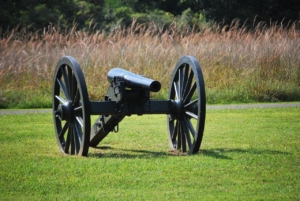
I’m back in the United States after 24 years of living in Asia and Europe, and already, there’s been no shortage of political drama. When I left, 9/11 had not happened, there was no Iraq War 2, no Afghanistan War, no Hurricaine Katrina, no First Black President, no Trump. Back in those days, when an election day was over, everyone put away their signs immediately (my son Marco couldn’t believe that there was once a time before he was born that politics rarely came up and people didn’t wave political flags and get in fights everyday all year around,and talk about their politics all the time). I remember those days. It was nice. According to a recent poll (May), 47% percent believe the USA is headed for a Civil War (even on that topic we are divided down the middle).
But is that a real possibility and what would that Civil War even look like?Believe it or not, how civil wars start is something academics study. Some of the factors that determine whether a country is close to civil war are the following: 1) How strong and secure are the country’s democratic institutions? Switzerland’s democracy is extremely stable, Venezuela’s is not. Are the institutions considered trustworthy? 2) Has there been an extended period of extreme division? The longer it continues to bubble, the more likely it is that a country splits. 3) Is there a rise in autocracy and centralization of power? Autocracies create an “only one party can exist” mentality that ends Democracy. 4) Is there armed conflict in the bordering countries creating a nation surrounded by civil conflicts? (FYI-Mexico is in a “civil war” but against cartels) 5) Are infant mortality rates high? 6) Is one particular minority group being singled out for persecution? 7) Is the particular country strongly affected by social media? 8) Is there a significant wealth gap between the rich and the poor? These are just some examples, but you only need half of these to be at a high risk of a civil war, according to some scholars. The USA is far enough down this road that avoiding it will be like the proverbial last minute turn of the wheel before the car crashes into oncoming traffic. In other words, the US has little margin for error. Almost none. W
But what would a Civil War 2.0 look like? It wouldn’t be people wearing gray uniforms vs people wearing blue uniforms like last time. I suspect it will take on one of two forms: 1) The election has a clear winner, the other side refuses to accept it, and government agencies, states, and people start disassociating with each other, followed by outright violent revolution (storming the Bastille), January 6th but on a bigger level in more places [The new movie “Civil War” with Kirsten Dunst does a good job of portraying what this US civil war would look like today].The other option is the Northern Ireland version. Two sides that co-exist, but not without lots of hatred, occasional terrorist attacks, bombings of innocents, and assassination attempts. Life goes on as normal, except for bursts of violence and terrorism occurring frequently enough that no one ever relaxes. People are on alert, but also numb. Can a nation that has many of these characteristics avoid a Civil War? Yes, but it often takes something like an external attack from a foreign country to make people put the hatred aside. Think the week after 9/11.
Another option is that one side overplays their hand and it leads to the deligitimization of that side. They fizzle out. This can take a while. One final option I would suggest is that the foot soldiers on both sides start to realize that they are fighting the wrong enemy. For instance, both Red America and Blue America have huge swaths of people that have fallen out of the Middle Class and struggle to pay bills, health care, get an education, and a job with upward mobility. It’s possible that the people on both sides realize they have more in common than they thought, and it sparks a revolution instead of a Civil War. I suspect, this is what will ultimately happen in the United States over the course of the next 20 years. A switch from race, party, and religious differences and a move toward class differences. I say that because never in history has society taken on so much public and private debt and created such a massive wealth divide between the have and have-nots. I further suspect that the wealth-gap is the primary driver of all the frustration on both sides, and social media and mainstread media is the match that lights the fire and makes it about something else (race, religion, politics, nationality).
I don’t think most Americans want to drop their i-phones, take up arms, shoot their work colleagues over a political difference, or dispose of an entire race of people. But fear is a great motivator and in today’s world, fear has been monetized and distributed at lightning speed through technology. And sadly, our brains are chemically more responsive to fear and anger than they are to peace and understanding. It’s completely possible that democracy can’t exist in an environment of so much wealth disparity combined with powerful technologies that monetize fear. I’m glad to be back. Despite the dark news, there is so much that has been fun in these first couple of weeks back. I love this country deeply. I have close friends on both sides of the aisle. Ultimately, the big choice will not be a vote for a party in this election, but for the condition of our own heart.
